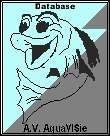 |
Apistogramma juruensis |
 |
||||||||||||||||||||
|
|
|
|
||||||||||||||||||||
| Explanation of the symbols | ||||||||||||||||||||||
|
|
|
|||||||||||||||||||||
|
||||||||||||||||||||||
|
The best way to keep this species is to hold them with about
10 in an aquarium of 1,50 m (60"). Then you can study
the behaviour of these animals best. The aquarium
should be set up with plants, stones, driftwood and roots
that make a lot of hiding places and caves. It is wise
to change the temperature regularly because they get
bacterial infections easily. They are very sensitive
for nitrates. A regular changing of the water is
necessary. In their natural habitat they feed on detritus, in the aquarium you can give them small live food such as Artemia, Daphnia and Cyclops. Don't give them Tubifex and mosquito larvae. Breeding is rather easy. With very soft water (2Gh) the eggs are laid and fertilized in a cave. The female cares for the fry for a period of about 4 weeks. A week after hatching the male cares for them as well. You can raise the fry with baby brine shrimp. |
||||||||||||||||||||||
|
|
||||||||||||||||||||||
| Mike Jacobs | ||||||||||||||||||||||
 |
||||||||||||||||||||||
|
|
||||||||||||||||||||||
